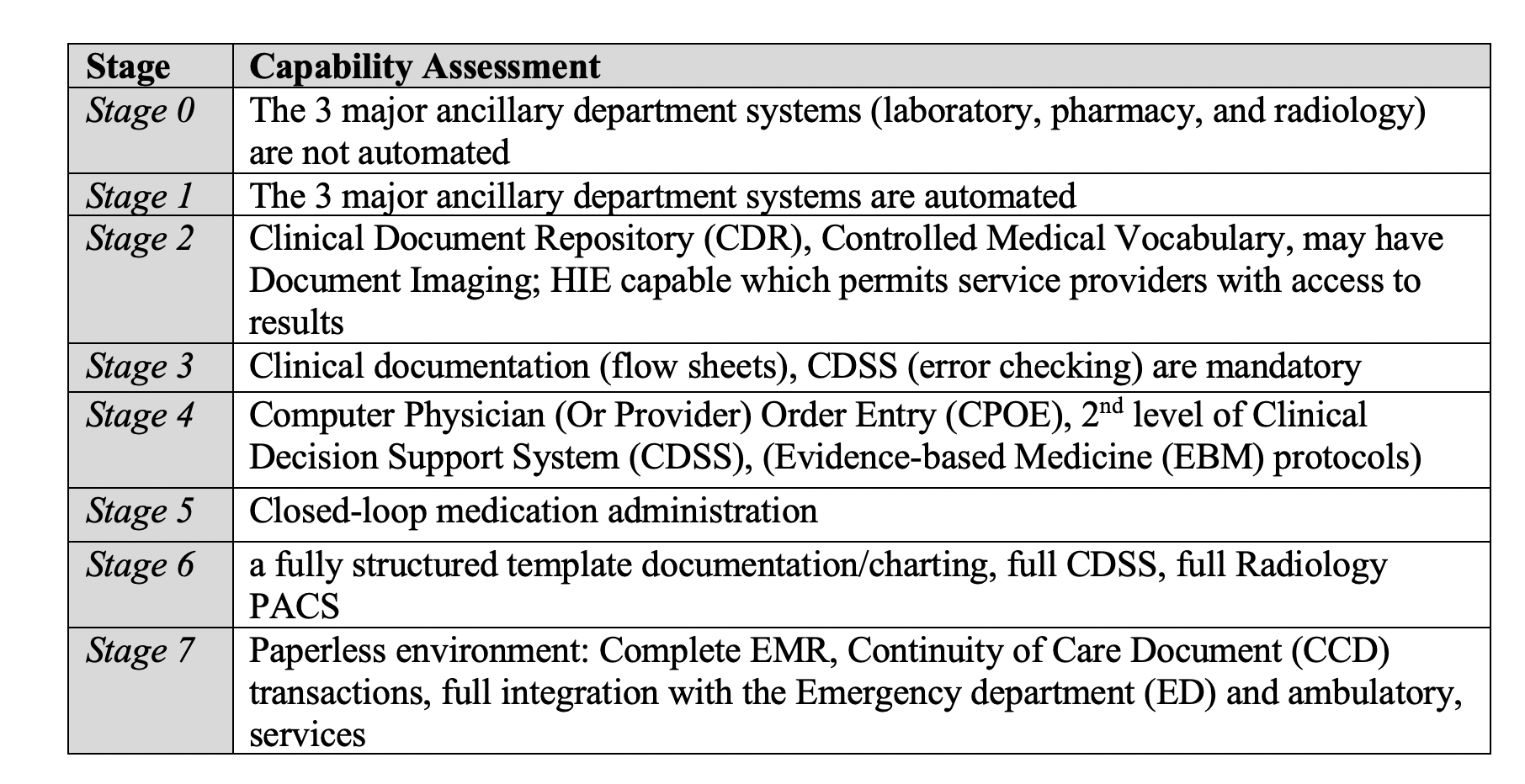Electronic Health Records (EHRs) did not achieve the expected targets that were expected, especially with regards to the improvement of services for patients with chronic health conditions.
Great challenges were experienced that represented a barrier against successfully connecting different points of care over time.
For a population health system to be of great value to the community, it should be capable of coordinating the healthcare service among different providers and different points of care.
In April 2019, the WHO released its new guidelines for digital health [1]. The guidelines focus on recommendations for 10 methods the countries can use for applying digital health interventions to improve the overall quality of service for the sake of better population health. The new guidelines considered the recent trends in using mobile phones, tablets, computers, and telemedicine where patients can use web portals or their mobile phones to have access to the healthcare service.
The main target of any PHIMS is to:
- Understand the nature of your population’s health and the challenges facing it.
- Improving the status and population health.
- Protect the population’s health from harm.
The six components of a health information system
In the Health Metrics Network (HMN) Framework (another published guideline by the WHO), the WHO has defined what HIS should include and determined the requirements for optimum interaction between its modules. The WHO framework constitutes 6 items:
- Resources: include the legislative, regulatory, and planning frameworks needed to obtain a high-performance functional system.
- Indicators: a core set of indicators for the three domains of health: (1) Determinants of health (socioeconomic, environmental, behavioral, demographic and genetic determinants or risk factors); (2:a) health system inputs (policy, organization, human resources, financial resources, health infrastructure, equipment, and supplies), (2:b) outputs (health service availability and quality, as well as information availability and quality) and (2:c) outcomes (service coverage and utilization); and (3) health status (levels of mortality, morbidity, disability, and wellbeing).
All countries, therefore, need a nationally defined minimum set of health indicators used regularly in national program planning, monitoring, and evaluation.
- Data sources: Sources of data can be either population-based (censuses, civil registration, or surveys) or institution-based (personal records or service records).
- Data management: this covers all aspects of data handling from the collection, storage, quality assurance, and flow, processing, compilation, and analysis.
- Information products: this step organizes data into information.
- Dissemination and use: organized information can is accessible and ready now to be used by decision-makers (either clinical or political decision-makers).
The EMRAM® Model
In 2005, the Healthcare Information and Management Systems Society (HIMSS) determined 8 stages for EMR adoption (Electronic Medical Record Adoption Model SM (EMRAM)). These stages are more suitable when we talk about hospitals rather than an outpatient care facility.
EMRAM is a global benchmark model to reflect a typical way a hospital progresses towards a paperless EPR environment. The 8 stages can be summarized as follows:
If we are discussing a national population health information system, it is recommended that the healthcare planner should follow the stages of the EMRAM model just to be sure that he is moving on the right track.
During the last few years, countries all over the world started to push their major hospitals to achieve advanced stages.
57357 hospital in Egypt (Children Cancer Hospital) has achieved Stage 6. The same achievement was earned by two of Hamad Medical Corporation’s (HMC) facilities, the Heart Hospital and the National Center for Cancer Care and Research (NCCCR).
Turkey has one of its public hospitals among the EMRAM Stage 7 family of hospitals in Europe, and more than 150 public hospitals have achieved the criteria needed for stage 6.
Achieving a high HIMSS stage can be guaranteed an ideal data collection that will be very appropriate for building a successful national population health information management system.
The Dashboard Industry
The main target of any PHMIS is to provide the decision-maker (whether clinical or political) with an overview of the health status in the country with regards to specific key indicators (as discussed before) through a smart dashboard. Decision-makers do not always have time to go through details or navigate through a huge data warehouse. Instead, they should have access to data insights and reports through a smart dashboard.
The dashboard industry has evolved throughout the last years as a multi-billion-industry. A dashboard may depend not only on records and inputs from the PHIMS but from different data sources (social media platforms, satisfaction surveys, drug sales, or maybe google searches statistics). It focuses on building and using analytics reports and data visualizations. Data visualization, in general, depends mainly on the quality of data. It’s important to ensure that your data visualization always outputs quality data.
Dashboard usability adoption should be assessed. If users do not trust your data, your dashboard will never be used.
Moreover, there’s a high chance that if the system is outputting garbage data, one of your users will detect that problem before you do. This has happened during. Driving the decision-making process through a dashboard can be known as “Business Intelligence”. The topic is broad and should be discussed in another separate blog.
To help users believe that your data is reliable, you can look at the data from 2 different aspects:
Internal company data: If you are using data from your company, you should work in collaboration with your IT department to select the best-quality-most-recent data. IT team members will be aware of the holes they have in their data warehouse.
External data from government agencies and other public or private sources:
If you are using this type of data, make sure to provide the source notes. Some users may want to look at the raw data themselves just to be sure it’s trustworthy. Others will take your word for it, but if you have no references, you run the risk of appearing unserious, and the dashboard will be discarded.
There is a third option, which appears to be the most feasible option which is to depend on a company that provides high-quality data that is normalized and standardized. Instead of wasting your time to search for how trustworthy this company’s products are, it could be well-known globally or a certified or award-winning organization.
John Snow Labs may be an ideal place for offering such data products, which can be used for natural language processing in healthcare. It offers a high-quality data catalog that is machine and manually verified. John Snow Labs team developed (cleaned and curated) more than 1800 medical data sets across 18 areas of human health and well-being, in addition to having a team of healthcare research specialists, who can make your research needs available at a glance.
John Snow Labs is a trustworthy, well-known globally, and award-winning organization. You do not need to check the raw data yourself, although you can view and download samples from the datasets you are seeking.
In the John Snow Labs’ catalog, you can find a valuable data package related to OECD Countries Health Indicators. This package contains 23 datasets of internationally comparable indicators that cover population demographics and population health status (including natality, mortality, quality of life, and morbidity) and major determinants of health like healthcare system and services and behavioral health risk factors.
By incorporating Generative AI in Healthcare, these datasets can be utilized to predict and improve patient outcomes, while the integration of a Healthcare Chatbot can provide personalized health recommendations and support to individuals, further enhancing the efficiency of population health management.































